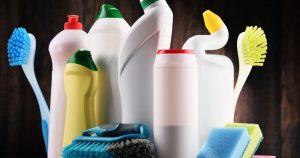According to the Australian Institute of Health and Welfare, around 10,800 Aussies are hospitalised due to accidental poisoning each year, resulting in 1,500 deaths. Sadly, children aged up to four had the highest rate of accidental poisoning.
These figures aren't surprising, as many homes contain everyday products that are potentially toxic. And when these substances aren’t stored properly, accidental poisonings can occur.
We want to make you aware of these substances and the preventative measures you can take to reduce the risk of accidental poisoning in your home. Our list includes some of the most common household poisons, but there are dozens of everyday products that can be toxic to your family and pets.
If you ever suspect human poisoning, immediately call the Poisons Information Centre helpline at 13 11 26. If someone stops breathing, collapses, has a seizure or serious allergic reaction, call 000 immediately.
